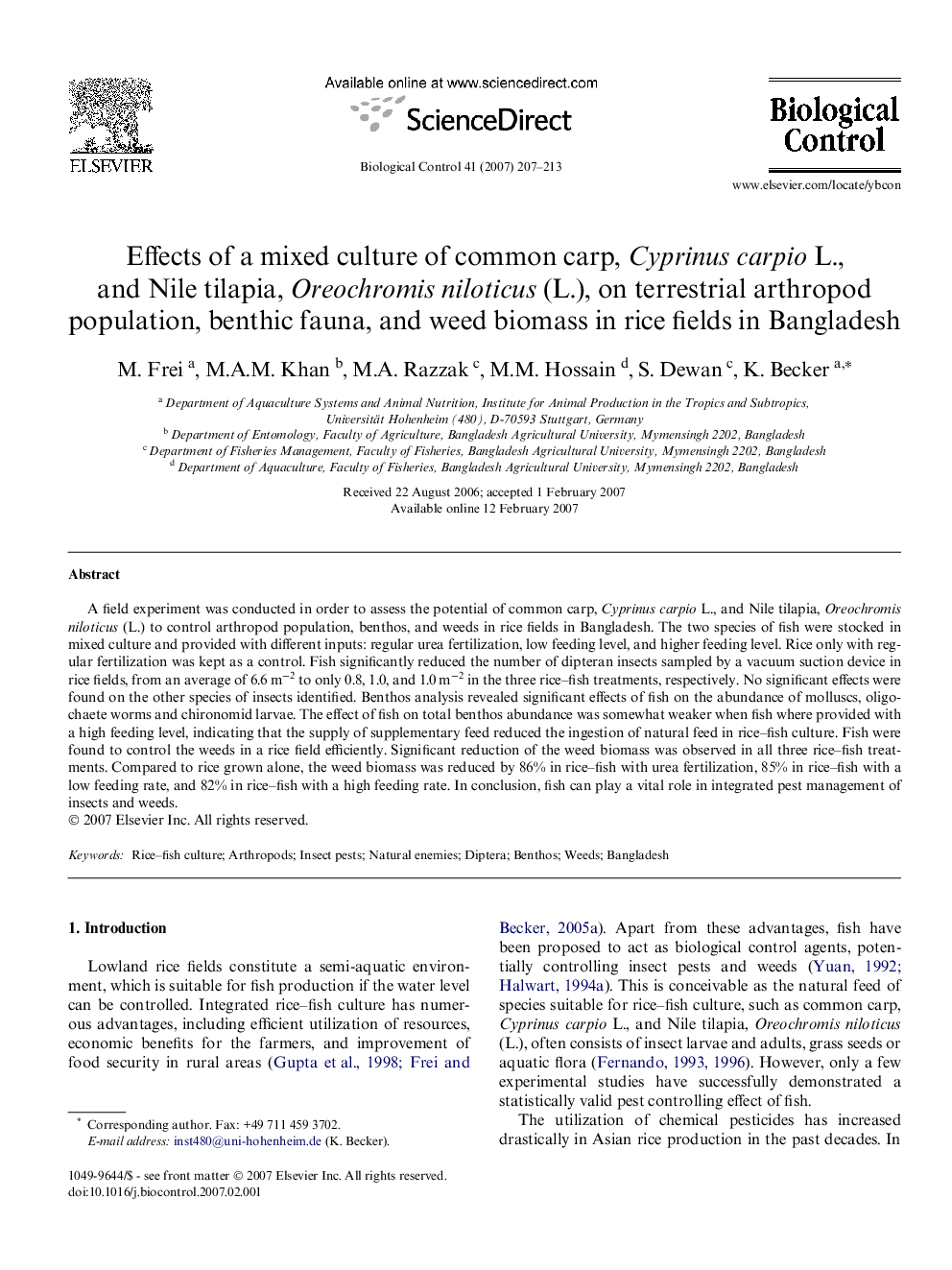| Article ID | Journal | Published Year | Pages | File Type |
|---|---|---|---|---|
| 4505084 | Biological Control | 2007 | 7 Pages |
A field experiment was conducted in order to assess the potential of common carp, Cyprinus carpio L., and Nile tilapia, Oreochromis niloticus (L.) to control arthropod population, benthos, and weeds in rice fields in Bangladesh. The two species of fish were stocked in mixed culture and provided with different inputs: regular urea fertilization, low feeding level, and higher feeding level. Rice only with regular fertilization was kept as a control. Fish significantly reduced the number of dipteran insects sampled by a vacuum suction device in rice fields, from an average of 6.6 m−2 to only 0.8, 1.0, and 1.0 m−2 in the three rice–fish treatments, respectively. No significant effects were found on the other species of insects identified. Benthos analysis revealed significant effects of fish on the abundance of molluscs, oligochaete worms and chironomid larvae. The effect of fish on total benthos abundance was somewhat weaker when fish where provided with a high feeding level, indicating that the supply of supplementary feed reduced the ingestion of natural feed in rice–fish culture. Fish were found to control the weeds in a rice field efficiently. Significant reduction of the weed biomass was observed in all three rice–fish treatments. Compared to rice grown alone, the weed biomass was reduced by 86% in rice–fish with urea fertilization, 85% in rice–fish with a low feeding rate, and 82% in rice–fish with a high feeding rate. In conclusion, fish can play a vital role in integrated pest management of insects and weeds.
